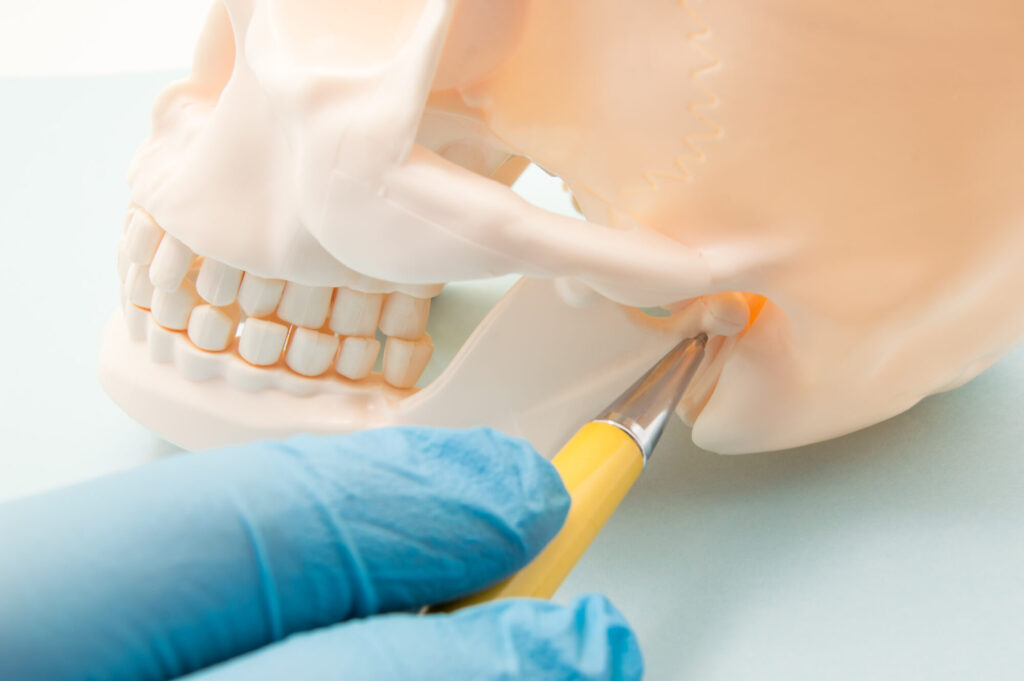
Millions of Americans experience pain in their jaws, ears, face, or head due to a temporomandibular jaw disorder, commonly referred to as TMJ. The two joints connecting the lower jaw to the skull are complex systems composed of myriad muscles, ligaments, cartilage discs, and bones responsible for giving these joints their remarkable range of motion. They are also susceptible to inflammations, strains, and other injuries that fall under the “TMJ” umbrella.
Getting relief from the pain of TMJ disorders can be as simple as a few days’ worth of over-the-counter painkillers or can involve surgery or orthodontic procedures. But the first step in overcoming any condition is understanding what’s happening to cause the problem in the first place.
Here are five facts from Athens Oral Surgery Center, the local TMJ specialists for Athens, Georgia, and its surrounding communities.
1. TMJ Isn’t the Name of a Condition
Technically, TMJ is simply an abbreviation for temporomandibular joint, one of the two joints that connect the lower jaw to the skull. Everyone has two TMJs, one on each side of the head, located slightly in front of the ear.
Your TMJs are unique joints in your body in that they allow both a hinging motion – opening and closing your mouth – and also a sliding movement to bring your entire lower jaw forward and down. You can see this motion in action by trying to stick out your jaw – you can feel your jaw sliding forward and away from the back of your mouth.
This complex range of motions requires a complex assembly of cartilage, ligaments, and muscles, each of which can suffer from overuse injuries, inflammation, or other conditions collectively referred to as transmandibular disorder, or TMD.
So, to be technically correct, TMD is a condition that can occur within your TMJ.
2. TMD Isn’t the Name of a Single Condition
There’s no one cause for pain or discomfort in the mandibular joints; there are several. Since most of the conditions associated with TMD pain are of similar origin and have similar treatments, it’s more convenient to refer to all of these conditions simply as TMD.
Your doctor or dentist can give you a more precise definition of the specific type of TMD you may be suffering from, but for most purposes, referring to the condition as TMD is adequate.
3. TMD Usually Goes Away Without Medical Treatment
Most of the time, the only treatments a case of TMD will require are:
- Over-the-counter painkillers to manage the pain and applying ice packs to reduce swelling or inflammation.
- Taking a break from chewing gum, talking loudly, or other activities that require vigorous chewing or opening the mouth widely.
- Possibly a diet of soft foods for a few days to reduce the exertion of the TMJs.
Some cases of TMD are caused by bruxism, or grinding the teeth during sleep. If you suspect that grinding may cause your TMD, purchasing an over-the-counter mouth guard and wearing it at night may help reduce your TMD pain.
If over-the-counter remedies and several days of reducing the strain on your jaw don’t help, it’s time to see your local TMJ specialist.

4. There Are No Tests For TMD
Unlike many medical conditions, there’s no hard-and-fast diagnostic tool for TMD. The pain from TMD can radiate into other areas of the body and mimic anything from a migraine to an ear infection to sinusitis. You can even have TMD and experience pain everywhere except your jaw.
The only way to determine when a patient has TMD is a careful examination and unambiguous communication between the patient and the doctor as to the location and severity of pain and what, if anything, makes the pain worse or better.
The most common symptoms of TMD include:
- Pain around the ear, near the location of the TMJ. Specialists can usually differentiate between an ear issue and a jaw issue reasonably quickly.
- Headaches and neck aches
- Tenderness of the jaw, jaw muscles, or the TMJs themselves
- Pain in the jaw when chewing or biting
- Facial aches
- Difficulty opening or closing the mouth
- Noises from the jaw, such as clicking or popping when opening the mouth
- Tooth sensitivity without an apparent dental cause.
It’s important to note that any of these symptoms can also indicate dozens of different conditions, with only a few being related to the TMJ. Some of these symptoms may not even be indicative of a condition at all. For instance, some people experience popping or clicking in the jaw without ever experiencing pain or suffering any ill effects; they just have a jaw that normally makes noise.
5. Surgery or Orthodontia Should be the Last Resort for TMD
As mentioned before, nearly every case of TMD can be managed with rest and over-the-counter medications. Like your knees, shoulders, or hips, your TMJs are joints that occasionally ache. If you have a sore knee, your first choice wouldn’t be a knee replacement.
In the past, oral surgeons and orthodontists alike have been overly aggressive in treating TMD, but that is largely a thing of the past. By taking your concerns to a reputable local TMJ specialist, they can offer treatment options in a logical order, starting with the least invasive and least expensive options and only suggesting things like surgery or oral appliances in the most extreme cases.
Athens Oral Surgery Is Your Local TMJ Specialist With Years of Experience Treating TMD and Other Jaw Disorders.
Dr. Tomlinson and his team have dealt with thousands of cases of TMD and have the experience to provide quality care to relieve pain and get your mouth back in proper working order. Schedule an appointment by calling 706-549-5033.
Related Articles:
